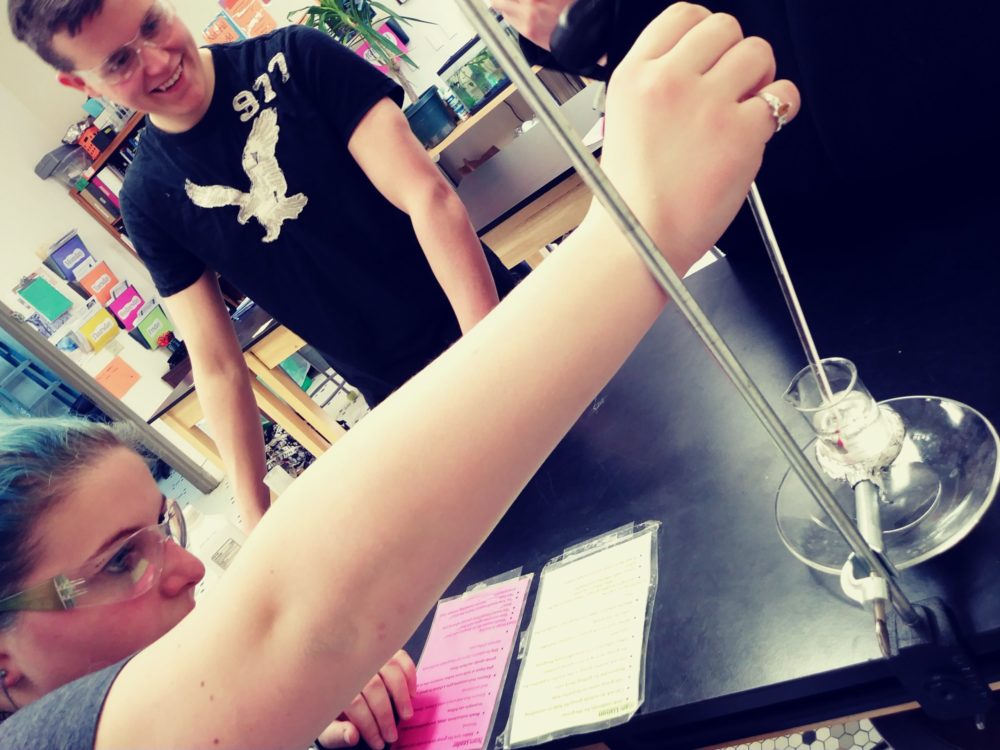
Public Education Innovation
In October Tina Nilsen-Hodges attended the first-ever Independent Charter School Conference in New York City with New Roots teacher Audrey Southern and trustee Peter Bardaglio. Over 300 leaders of small, independent charter schools like New Roots converged on the first-ever Independent Charter School Conference this year to celebrate shared values of equity, autonomy, and accountability, collaboration, diversity, innovation, respect for teachers, involved governance and community, and quality education – the opportunity to create an inspiring and transformative space in public education.
It was a powerful conversation as founders of the charter school movement spoke of the historic drafting of legislation to create a space in public education for the ground-breaking innovation teachers and parents knew could benefit their young people but that district schools were unable to provide. Two-thirds of all charter schools are small, independent schools like New Roots, and less than 15% the “for-profit” charters sensationalized by the news media that impact all charter schools.
“As we approach the ten-year mark, I am reflecting on our growing maturity as a school community, and looking ahead to what we can accomplish. Charter schools like High Tech High in San Diego, California gives us a glimpse into that future of expanding educational options and driving innovation that transforms lives and what’s possible in public education,” said Tina Nilsen-Hodges.
At High Tech High in San Diego, real-world problem-solving, student voice, and teacher empowerment are at the heart of an educational experience that results in 97% of students from all walks of life enrolling in a four-year college — and persisting in higher education at a rate of 89%. Freed from the constraints of high-stakes testing, High Tech High does not teach to a standardized test. The school doesn’t dictate content – their interdisciplinary, project-based curriculum is driven by student and teacher passion and interest. The result? Students learn to think like entrepreneurs, developing empowering “high tech” personal and people skills as they learn to take ownership, learn to learn, work towards long-term goals, apply creativity, solve problems, commit, persevere. What’s high stakes is the community presentation at the end – the entire year’s grade depends on the results of their team effort to realize a vision on a deadline.
Could this be done in other public high schools? That’s exactly the question that charter schools were designed to help answer. As “living laboratories” of innovation, small and nimble, charter schools are able to test and develop best practices in education, giving larger schools and districts valuable information that can support well-considered implementation. The recent documentary about High Tech High, Most Likely to Succeed, clearly shows that no less than a total redesign of the high school experience is needed to fully realize the potential of these practices – and that the experience is fabulously successful in reaching the most meaningful of the “accountability” goals, the only one that makes any real difference over time – not college matriculation but college completion, not a degree but learning who you are and what motivates and inspires you to do your work in the world.
There are some larger systemic problems that hinder both individual schools and the larger systems from fulfilling their potential. The major one is accountability plans that play by the rules designed for (very) large school systems and that reinforce the notion that performance on high-stakes tests is the ultimate litmus test of a school’s success. It’s critical that charters are given the freedom to implement innovative programs, but must be accountable for results that justify the expenditure of public funds. However, the measures are crude and define “success” in conventional ways that are easier to measure, rather than focusing attention on determining how we can “measure” creativity, innovation, passion, motivation, or any of the other attributes that we seek to cultivate in an educated person ready for the 21st century.
The model we take for granted as “normal” high school education was developed for very specific purposes over 100 years ago and has persisted in nearly the entirely same format: decontextualized disciplinary studies. Short class periods. A day divided into “periods.” All of this meant to train a generation of factory and corporate workers – and to sort people into apparently merit-based “tracks” that they would stay on for a lifetime.
This system has worked beautifully to train all of us to accept as inevitable/natural the corporate, industrial, class-based system that has been the cornerstone of our economy for the last few hundred years. It’s a dinosaur whose days are numbered.
“It is no surprise to me that the founders of High Tech High – a family with interests in business, entrepreneurialism, and international philanthropy – would ascribe to a philosophy of education that is so tightly aligned with those of us locally who work towards a just and sustainable world. For us to re-envision the way forward in the face of climate change, changing energy sources, and a changing social landscape, we will need to take on the “project” of re-designing. For that to happen, we will need to take ownership of our own learning, work together, create, persevere, imagine,” said Nilsen-Hodges.
“In public education, charter schools are the drivers of innovation. We are proud to play a critical role in leading the way forward into the 21st century.”
# # # #
For more information, contact Michael Mazza, director of community engagement at New Roots Charter School, at mmazza@newrootsschool.org.